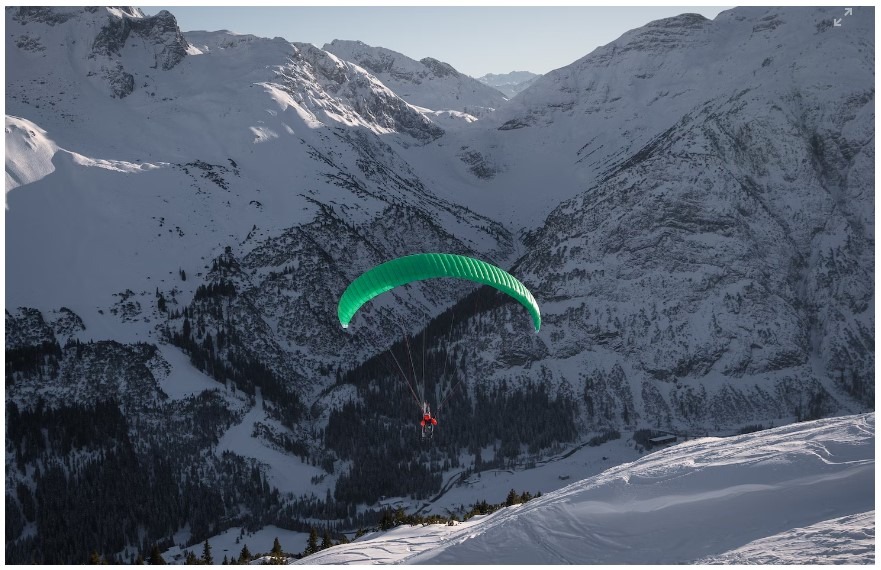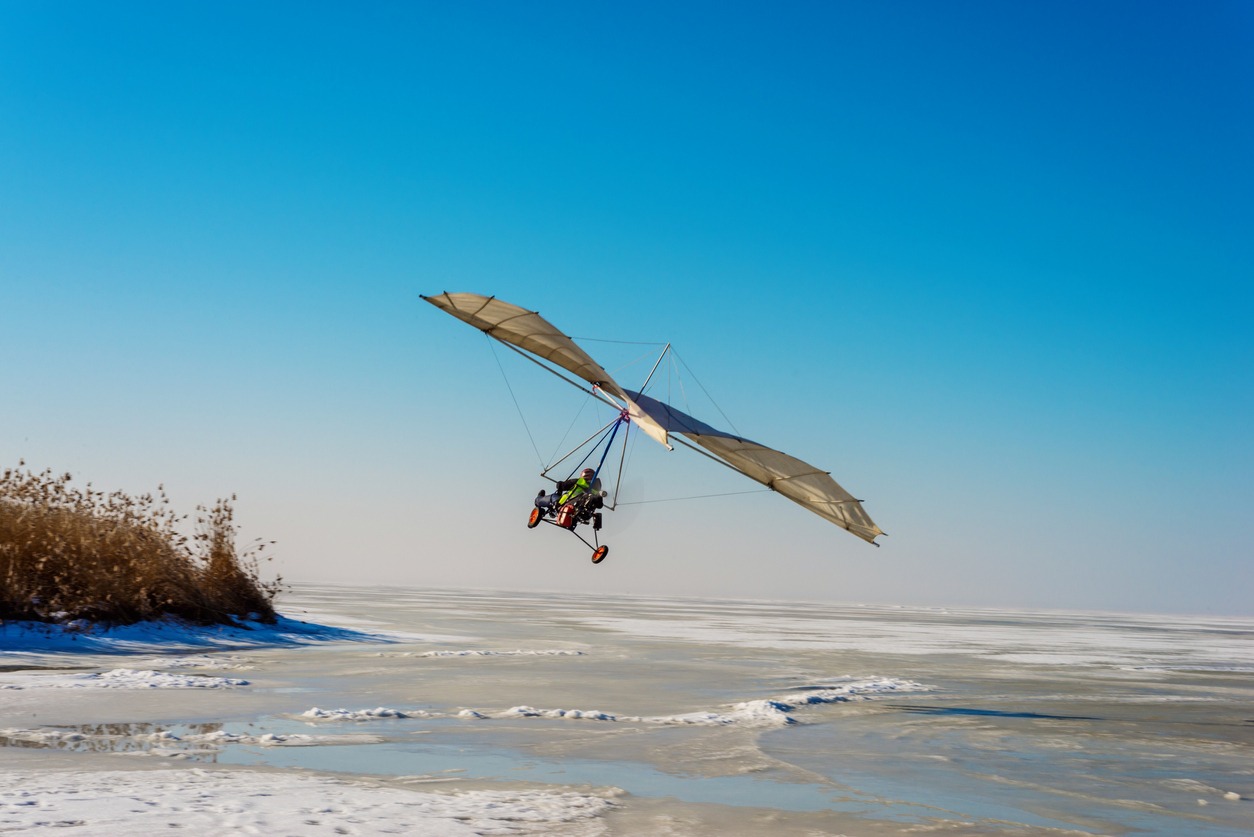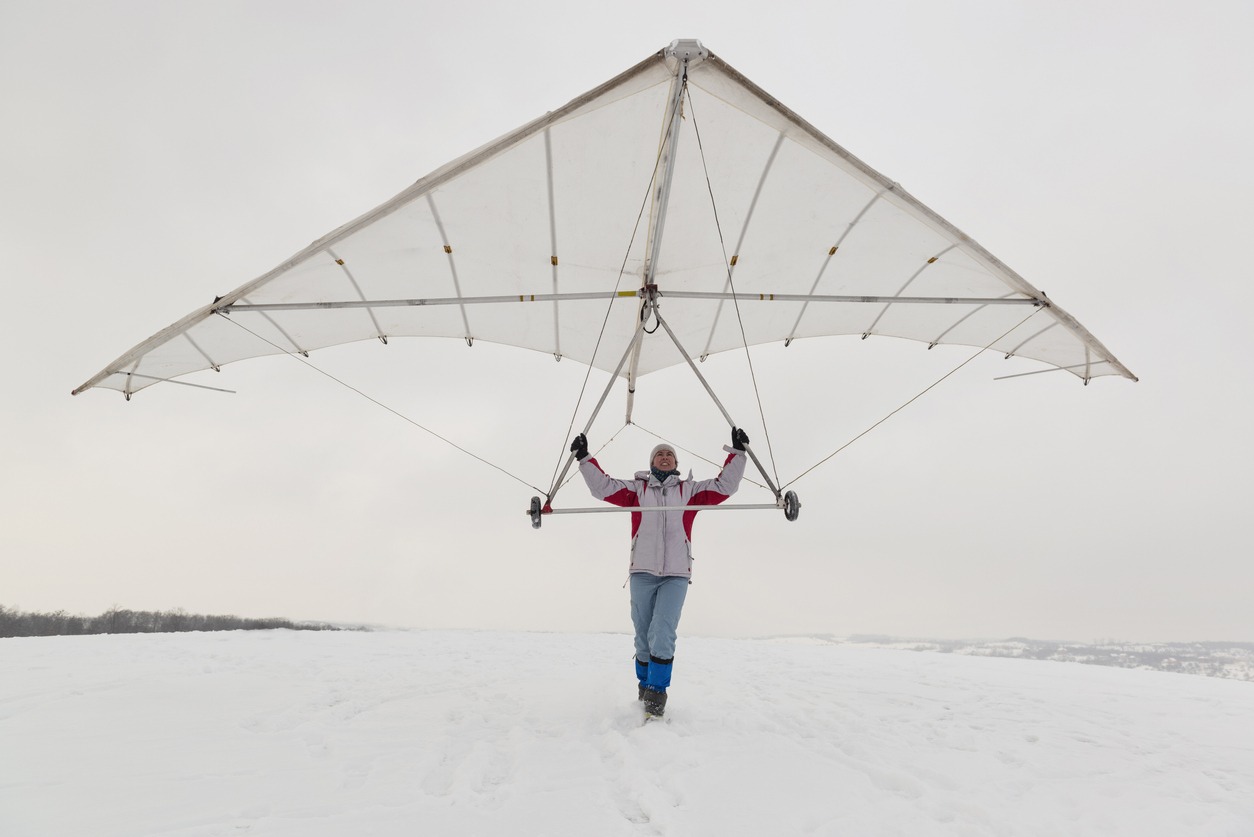Winter weather is notoriously bad for hang gliding. But it doesn’t mean it’s impossible. Sometimes, winds, rain, fog, and snow can render you stuck on the ground. But you can always work toward becoming a better hang glider prepared to fly even on non-flyable days.
Here are some tips to make hang gliding in the winter a more bearable experience:
Stay as warm as possible.
Most experienced pilots will tell you that a big part of the winter hang gliding experience is to stay as warm as possible. Make sure you know what to wear when hang gliding. But when flying in the winter, you must dress in three or more layers of loose-fitting, lightweight, warm clothing. The outermost layer of clothing that you wear must be tightly woven and water-repellent. The middle layer must be made of wool to absorb sweat and retain insulation. Wearing thermal underwear will allow ventilation while also allowing moisture to escape. The loose-fitting layers inside will trap air and act as an insulator.
Your hands and feet must also be protected. Frostnip hands and feet can make landing and maneuvering painful. Bar mitts are essential for any hang glider pilot. Boots and gloves must be made of wind-resistant, waterproof, and lightweight material. The best boots to wear is one with ankle support and a hiking tread. And when you’re choosing winter boots, choose one half-size too large so you can wear thick socks or two pairs at once.
Always carry an emergency survival landing kit.
Though most pilots dress warmly, they tend not to carry an emergency survival landing kit because of the additional weight. The extra weight of winter boots, jackets, and other thick apparel can increase drag, increase minimum sink speed, and affect glider performance. Don’t think that adding the extra weight of an emergency survival landing kit will greatly affect your winter flying. For every 10 lbs. of additional weight, the sink rate increases by only four feet per minute.
It’s better to be affected for a little bit by the additional weight than be sorry in the end.
Practice at a training hill first.
Sometimes, the wind direction is wrong, and none of the nearby mountains are launchable. If you’re in doubt, always check your local training hill – it’s usually open and will get you to practice in a range of conditions, especially in the variable winter weather.
Always try to practice at your training hill to try your no-wind launches, soaring the ridge, ground handling, flaring, spot landings, and more. The training hill allows both starters and advanced hang glider pilots to practice and improve their launching and landing skills to be prepared for the sometimes bumpy air.
Get your equipment tested.
Your hang glider must be inspected every six months, and the parachute must be repacked every year. Check for any damage on the glider that might affect safety and performance, including dents in the metal, worn hang loops, frayed wires, tears, corrosion, or other symptoms of wear-and-tear that must be addressed before taking your glider up in the air.
Repacking the parachute will help you make sure that the rubber bands are still intact, the lines are straight, and the parachute is in good condition to ensure a quick and smooth deployment in the event that you need to use it.
Familiarize yourself with your variometer.
A variometer, or varios, is an essential instrument needed to let the pilot know the direction they are going. Varioemeters record the air pressure and can do a lot more than simply telling you when you’re in rising or sinking air. Depending on the model, they can relay wind directions, airspace warnings, and more – as long as you know how to use and read them.
Devote some time on a non-flyable to read the manual and familiarize yourself with your variometer. Navigate through different menus on your instrument and watch tutorials for using your varios model.
Build muscle and endurance.
While you don’t need much upper body strength to hang glide successfully, stronger muscles can help you handle windy conditions and handle turbulent winter air with confidence. Also, building muscle and endurance can help you fly longer and further before getting tired. You will want to save your energy for landing because it’s one of the riskiest and most important times of your flight. Many times, landing happens when the hang glider is already tired, so building up some strength is always a great idea.
Hang gliding works the core, arms, shoulders, and back, so exercises that target those areas would be very helpful. Try doing crunches, planks, push-ups, pull-ups, rowing, and deadlifts. General fitness activities like jogging, hiking, and bicycling can also increase your endurance and help you reach your desired weight for wing-loading.
Analyze your flight tracks and watch videos.
There are so many videos of hang-gliding crashes and near-miss videos on the Internet – both minor and serious. Some clips can be hard to watch, but they can offer unique learning experiences that can help teach you how to spot and avoid the same mistakes. See what mistakes you can identify in videos you watch so that you can review your hang gliding strategies. It’s not always pleasant to prepare for the worst, but it will surely help if you find yourself in the same scenario. Hang gliding is challenging already on a sunny day, but during the winter, the challenge multiplies.
You can gain insights by analyzing your own flights, as well. Attach a GoPro or any small sports camera to your glider, then watch your own footage to see if you can make any improvements. You may also take a video using a drone operated by a friend. Focus on your launch, landing, and any ineffective or unnecessary movements.
Ask questions and connect with the community.
The hang gliding community is full of pilots who are happy to share their advice and experiences. You can find online forums connecting you with other hang gliders, and feel free to post any questions you may have. It will be great to connect with other pilots and try their suggestions, especially when it comes to flying during the winter. But remember that not all advice should be followed. Learn to give good advice from a recommendation that is better ignored because they are not fit for your experience or skill level or is simply wrong. Always practice good judgment.




